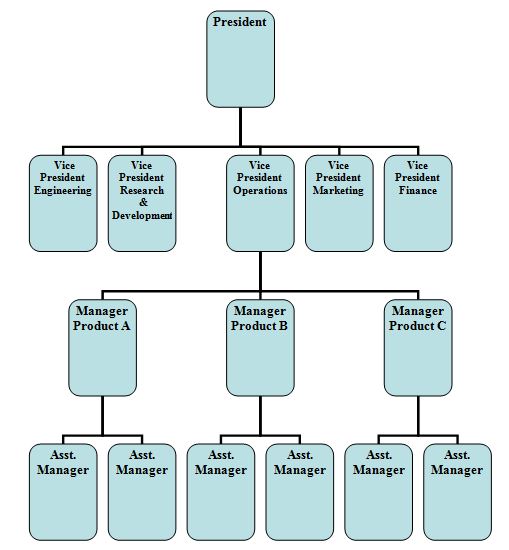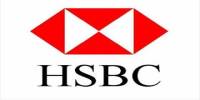Executive Summary
We have learn much about the Business Organization and Management. But we do not know how they are applied in the real lives. To find this out i.e. how they are applied in the real lives we were given this case study.
For completing this project we needed information and to extract information we had to choose reference books. Taking information from them we have made our efforts to point out what are the asking of this case study and try to solve the problem according our best effort.
We tried our best to fetch all the possible information and include them in a relevant manner.
Case 01
If lean and mean could be personified, Percy Barnevik would walk through the door. A thin, bearded Swede, Barnevik is Europe’s leading hatchet man. He is also the creator of what is fast becoming the most successful cross border merger since Royal Dutch Petroleum linked up with Britain’s Shell in 1907.
In four years, Barnevik, 51, has welded ASEA, a Swedish engineering group, to Brown Boveri, a Swiss competitor, bolted on 70 more companies in Europe and the U.S., and created ABB, a global electrical equipment giant that is bigger than Westinghouse and can go head to head with GE. It is a world leader high- speed trains, robotics, and environmental control.
TO make is monster dance, Barnevik cut more than one in five jobs, closed dozens of factories, and decimated headquarter staffs around Europe and U.S. Whole business were shifted from one country to another. He created a cross of just 250 global managers to lead 210,000 employees. IBM has talked with Barnevik and his team about how to pare down its won overstaffed bureaucracy. Du pont recently put Barnevik on its board. Says a senior executive at Mitsubishi Heavy Industries: “Theirs as aggressive as we are. I mean this as a compliment. They are sort of supper- Japanese.”
ABB isn’t Japanese, nor is it Swiss or Swedish. It is a multinational without a national identity, through its mailing address is in Zurich. The company’s 13 top managers hold frequent meetings in different countries. Since share no common first language, they speak only English, a foreign tongue to all but on. Like their boss, senior ABB managers are short on sentiment and long on commitment. An oil portrait of a 19th –century founder of brown Boveri hangs in ABB’s headquarters, but few are sure what his name is (Its Charles Brown) Ask for a fax number, though and you are likely to get two, office and home.
To Barnevik, today’s competitive marke5t economy is a “cruel world”. Not making it any kinder, he has launched a personal war on what he sees an excess capacity- 20 to 30 percent in the electrical equipment industries in Europe alone. Educated in Sweden and United States (he studied in Business Administration and Computer Science at Stanford in the mid 1960s.). Barnevik thinks European industry must restructure massively to become competitive in world’s markets. He forces billions of dollars of mergers and acquisitions in the next three to five years. Europe’s best strategy against Americans and Japanese, he believes, is to break free of protected national market. ]
Before the merger, Brown Boveri had 4000 people in Baden, Switzerland. ASEA had as many employees as 2000 in Vasteras, Sweden. The combined company now employees just 150 in a modest six-story building across from a train sector in west Zurich. Where did everybody go? Many were fired? The rest were sent to subsidiaries or offered jobs in new companies set up to assume many headquarters functions. (ABB marketing services, for example, creates and runs campaigns for ABB, but also takes on a few other clients. And Barnevik expects it to make money.) It’s not just cost cutting Barnevik is after, though that is obviously important. Says her “Ideally you should have a minimum of staff to disturb the operating people and prevent them from doing there more important jobs.”
Barnevik’s master matrix gives all employees a country manager and a business sector manager. The country managers run traditional, national companies with local boards of directors. ABB has about 100 such managers, most of them citizens of the country in which work of more exalted rank are 65 global managers who are organized into eight segments: transportation, Process automation and engineering devices, financial services, electrical equipment (mainly motors and robots), and three electric power businesses: generation, transmission and distribution.
Barnevik is well aware that the once popular management by matrix is in disfavor in U.S. business schools and has been abandoned by most multinational companies. But he says he uses a loose, decentralized version of it – the two bosses are not always equal – that is particularly suited to an organization composed of many nationalities.
The matrix system makes it easier for managers like Gerhard Schulmeyer, a German who heads ABB’s U.S. business as well as the automation segment, to make use of technology from other countries. Because of the matrix, Schulmeyer has a better idea of what is available where. He says that the techniques developed by ABB in Switzerland that he use to service. U.S. steam turbines are more reliable and efficient that those of General Electric and Westinghouse, his main American competitors. Schulmeyer also relied or European technology to convert a mid land, Michigan nuclear reactor into a natural gas field plant…..
ABB executives say the value of the company’s matrix system extends beyond the swapping of technology and products. For example, the power transformer business segment consist of 31 factories in 16 countries Barnevik wants each of this business to be run properly with intense global coordination. So every month the business segment headquarters in Mannheim, Germany, tells all the factories how all the others are doing according to dozens of measurements. If one factory is lagging, solutions to common problems can be discussed and worked out across borders.
Questions
- How is ABB achieving integration (coordination) of its global operations?
- Which of the five basic departmentalization formats do you detect in ABB’s structure of eight segments? Explain.
- Has Barnevik created an effective balance between centralization and decentralization? How can you tell?
- Relative to the advantages and disadvantages listed, is ABB’s matrix structure appropriate to its situation?
- How dose ABB apparently avoid unity-of-command problems with its matrix structure?
Problem 01
How is ABB achieving integration (coordination) of its global operations?
Solution
Integration
Integration is the collaboration among the specialists that is needed to achieve a common purpose. Integration can be partially achieved through a number of mechanisms, including hierarchical control, standard policies and procedures, departmentalization, and liaison individuals and groups.
Two managements professors working in the United States, Paul R Lawrence and Jay W. Lorsch went a step further with the notion that environment influences organization structure. They reasoned that organizational environment might have different effects on various units within the same organization.
When they consider firm effectiveness, the researchers found that the most effective firms attempted to balance differentiation with efforts toward integration refers extend to which there is collaboration among departments that need to coordinate their efforts. The greater the differentiation among departments because of environmental instability the greater the efforts toward integration in the most successful companies.
The successful container companies relied on the functional hierarchy and roles and regulations to achieve the necessary degree of integration successful companies used a variety of vertical and horizontal coordinating mechanisms to attain effective integration in the face of high differentiation.
According to Lawrence and a Lorsch, every organization requires appropriates dynamic equilibrium (an open system term) between differentiation and integration. Moreover, their comparison of successful and unsuccessful firms in three different industries demonstrated that in the successful firms both differentiation and integration increased as environmental complexity increased. These finding applied not only to the over organization but also to organizational subunits such as departments or divisions. Lawrence and a Lorsch also found that- “the more differentiated and organization, the more difficult it is to achieve integration “.
These findings suggest that organizational failure in the face of environmental complexity probably results from a combination of high differentiation inadequate integration. Under these conditions, specialists in different areas within the organization work at cross-purposes and get embroiled in counterproductive jurisdictional conflicts.

Integration (coordination)
Process to achieve integration
ABB can apply integration in their Organization by applying some integrating mechanisms. The integration methods are-
Integrating Mechanism:
- Forces Pulling the Organization together are-
- Formal hierarchy (chain of command).
- Standard policies, roles, and procedures.
- Departmentalization.
- Computer networks.
- Cross-functional teams and committees.
- Human relations training for managers (to help avoid interpersonal conflict).
- Liaison individuals and groups (to bridge gaps between specialists).
Formal hierarchy (chain of command)
System of grades of status or formal authority ranked one above other. ABB can integrate the global operations through setup a formal hierarchy where the chain of command will be clearly mentioned. It is very important mechanisms for multinational organization like ABB to integrate their operation all over the World.

Figure 02: Formal hierarchy (chain of command)
Standard policies, roles and procedures
ABB should fix up standard policies, roles and procedures for all part of the business all over the World to achieve integration of their business operation all over the world.
Departmentalization
Departmentalization means grouping related jobs or process into major organizational subunits. Departmentalization relates jobs, activities, or processes are grouped into major organizational subunits. A degree of coordination is achieved through departmentalization because member of the department work on interrelated tasks, obey the same departmental rules, and report to the same department head.
ABB must divide their different activities into different department. This will help the organization to perform their activities more effectively and efficiently.
Computer networks
New era is an era of computer. This modern invention of science has a great impact on the modern business world. The internet makes the use more broadly so as a organization of modern time ABB should adopt the computer network facilities in their organization which will help them to communicate among themselves and to outsiders of the organization.
Cross-functional teams and committee
Different Cross-functional teams and committees are important for the different purpose of the organization. Group or team effort will help to make a project done more effectively than the individual effort.
Human relations training for managers (to help avoid interpersonal conflict)
Accordingly to behavioral approach of management it is important to make good relations with employees and other inside people. For this purpose nowadays it is very crucial for the organization to make their managers trained into human relations.
Liaison individuals and groups (to bridge gaps between specialists)
Liaison is a important managerial role for the organization. Inside the organization it is important that there should be a liaison between the individuals and group of the organization. These liaisons help the communicating among the people of the organization to make their job done properly.
Recommendation
ABB can integrate the global operations through setup a formal hierarchy where the chain of command will be clearly mentioned. It is very important mechanisms for multinational organization like ABB to integrate their operation all over the World. Without integrating its activities all over the world ABB will not be success in its business operations.
Problem 02
Which of the five basic departmentalization formats do you detect in ABB’s structure of eight segments? Explain.
Solution
Departmentalization
Departmentalization means grouping related jobs or process into major organizational subunits. Departmentalization relates jobs, activities or processes are grouped into major organizational subunits.
A degree of coordination is achieved through departmentalization because member of the department work on interrelated tasks, obey the same departmental rules, and report to the same department head.
Advantages of Departmentalization
- Logical reflection of functions.
- Maintains power and prestige of major functions.
- Follows principals of occupational specialization.
- Simplifies training.
- Furnishes means of tight control at the top.
Disadvantages of Departmentalization
- De-emphasizes over all company objectives.
- Overspecializes and narrows view points of key personnel.
- Reduces coordination’s between functions.
- Responsibilities for profits are at the top only.
- Slow adaptation to change in the environment.
- Limits development of general managers.
Classification of Departmentalization
Basically there are five types of departmentalization. These are
- Functional Departmentalization
- Work Flow Process Departmentalization
- Customer Classification Departmentalization
- Geographic Location Departmentalization
- Product Service Departmentalization
- i. Functional Departmentalization


Figure 07: Work Flow Process Departmentalization
Departmentalization in ABB
In the organization ABB we can observe that there are eight departments. They have divided their entire business all over the world in to eight segments. Those are
- Transportation
- Process Automation and Engineering
- Environmental Devices
- Financial Services
- Electrical Equipment
- Generation
- Transmission
- Distribution
According to the five basic departmentalization formats the segments of ABB will fall into the Functional Departmentalization. ABB has categorized them into eight but the main base of their segmentation of their activities is the different types of functions of their organization. So the eight segments of ABB may call as the eight department of ABB according their functional areas.
Departmentalization is necessary for an organization like ABB. Since ABB have broad area of business so ABB should calcify their same types of activities into a specific department. It will help them to make logical reflection of functions so also maintains the power and prestige of major functions. It will simplify the training process of both new and old employees. Departmentalization helps to furnishes means of tight control at the top.

Recommendation
Through departmentalization ABB can improve the efficiency of the organization. Here, one thing is important that every department’s ultimate goal should match with the objectives of ABB. Otherwise departmentalization will be totally meaningless. Departmentalization will be meaningful when all the activities of each department will be coordinated.
Problem 03
Has Barnevik created an effective balance between centralization and decentralization? How can you tell?
Solution
Centralization
Centralization is defined as the relative retention of decision making authority by top management. Almost all decision making authority is retained by top management in a highly centralized organizations.
Decentralization
Decentralization is the granting of decision making of authority by management to lower level employees. Decentralization increases in the degree, importance and range of lower level decision making increases and the amount of checking up by top management decreases.
When we speak of centralization or decentralization, we are describing a comparative degree, not an absolute the challenge for managers, as a management consultant observed, is to strike a workable balance between two extremes.
Support for greater decentralization in the corporate world has come and gone over the years in faddish weaves. To day, the call is for the type of balance just discussed. The case against extreme decentralization can be summed up in three words- lack of control.
Balance helps neutralized this concern. Again, the contingency approach dictates which in of the continuum needs to be emphasized. Centralization, because of its mechanistic, nature, generally woks best for the organization in relatively stable situation. A more organic decentralization approach is appropriate for firms in complex and changing conditions.
Balance Centralization and Decentralization in ABB
In ABB Percy Barnevik has created an effective balance between centralization and decentralization. He has done this excellence through giving some legal authority to the lower level managers and employees.
Barnevik’s master matrix gives all employees a country manager and a business sector manager. The country managers run traditional, national companies with local boards of directors. ABB has about 100 such managers, most of them citizens of the country in which work of more exalted rank are 65 global managers who are organized into eight segments: transportation, Process automation and engineering devices, financial services, electrical equipment (mainly motors and robots), and three electric power businesses: generation, transmission and distribution.
Such this way he has tried to transfer some authority towards the lower level managers. This is what the decentralization means. Since, Barnevik has different country managers to run the country operations for the country that means that ABB has decentralize the authority to the top level management to lower level management.
So also ABB has the main branch to control the operations all over the world. After the merging (Brown Boveri and ASEA), the combined company now has just 150 employees in a modest six-story building across from a train sector in west Zurich. This is their head quarters they run the business operations all over the world over here.
Barnevik is well aware about centralization and decentralization in his multinational company. He says he uses a loose, decentralized version of matrix system in his organization – the two bosses are not always equal – that is particularly suited to an organization composed of many nationalities.
The matrix system makes it easier for managers to make use of technology from other countries. Because of the matrix, managers have a better idea of what is available in where. The techniques developed by ABB in Switzerland that use to serve in other country.
Recommendation
ABB should be careful about the centralization and decentralization of authority. Delegation of authority is a nice tool for decentralize the authority. By practicing this one ABB can decentralize its authority to lower level employees.
Problem 04
Relative to the advantages and disadvantages listed, is ABB’s matrix structure appropriate to its situation?
Solution
Matrix Structure Organization
In Matrix organizations, vertical and horizontal lines of authority are combined in checkerboard fashion. Authority flows both down and across the organizational structure
Advantages of Matrix Structure
Efficient use of resources
Individual specialists as well as equipment can be shared across projects
Project integration
There is a clear and workable mechanism for coordinating work across projects
Improve information flow
Communication is enhanced both laterally and vertically
Flexibility
Frequent contact between members from different departments expedites decision making and adaptive responses
Discipline retention
Functional experts and specialists are kept together even though projects come and go.
Improve motivation and commitment
Involvement of members in decision making enhances commitment motivation.

Figure 09: A Simplified Matrix Organization Chart
Disadvantages of Matrix Structure
Power struggles
Conflict occurs because boundaries of authority and responsibility overlap.
Heightened conflict
Competition over scarce resource occurs especially when personnel are being shared across projects.
Stow reaction time
Heavy emphasis on consultation and shared decision making retards timely decision making.
Difficulty in monitoring and controlling
Multidiscipline involvement heightens information demands and makes it difficult to evaluate responsibility.
Excessive overhead
Double management by creating project managers and like this position in the management.
Experienced stress
Dual reporting relations contribute to ambiguity and rote conflict.
Barnevik is well conscious about centralization and decentralization in his global company. According to his words, he uses a loose, decentralized version of matrix system in his business – the two bosses are not always the same – that is particularly suited to an organization collected of many nationalities.
The matrix system makes it easier for managers to make use of technology from other countries. Because of the matrix, managers have a better idea of what is available in where. The techniques developed by ABB in Switzerland that use to serve in other country.
Since the present condition of ABB is a stable condition and there are no conflicts among the management people so the matrix structure of management is more appropriate for ABB. For the matrix structure ABB are being able to observe their world wide business efficiently without any kind of major problem.
If we monitor the advantages and disadvantages of the matrix structure than it can easily found the disadvantages of matrix structure are minimized by the top management of ABB and the matrix structure of management are helping them to run the organization effectively and efficiently.
In case of any kind of managerial and other types of problem ABB has the option to solve it among the local country management and so also across the border. Solve the common problems and discuses it across the border is a common practice by the ABB.
Recommendation
Matrix structure can be able to improve the efficiency of the organization but it has some disadvantages also. Since matrix structure has some disadvantages so ABB should be caring about it. Specially on heightened conflict, slow reaction time, power struggles, difficulty in monitoring and controlling, unity of Command etc.
How dose ABB apparently avoid unity-of-command problems with its matrix structure?
Solution 05
Unity-of-command
It is believed by the management that the possibility of conflicting orders is a serious problem for the organization. It is a serious thereat to the smooth flow of the authority. It could be avoided by making sure that each individual should be answered to only superior. It can be explained simply as that each employees should receive order from only one superior.
Since ABB applying the matrix structure of management so the possibility of creating the unity of command problem in there organization is high. But the question is that why ABB have chosen the matrix structure where it can create the unity of command problem.
Avoid the Unity of Command Problem
Barnevik is well conscious about the once popular management by matrix is in disfavor in U.S. business schools and has been abandoned by most multinational companies. But according to him, using a loose, decentralized version of matrix structure – the two bosses are not always equal – that is particularly suited to an organization composed of many nationalities.
The matrix system makes it easier for managers to make use of technology from other countries. Because of the matrix, managers have a better idea of what is available in where. The techniques developed by ABB in Switzerland that use to serve in other country.
ABB executives thought that the value of the company’s matrix system extends beyond the swapping of technology and products. As for example, the power transformer business segment of ABB consists of 31 factories in 16 countries. Barnevik wants each of this business to be run properly with intense global coordination. So every month the business segment headquarters in Mannheim, Germany, tells all the factories how all the others are doing according to dozens of measurements. If one factory is lagging, solutions to common problems can be discussed and worked out across borders.
ABB run their operation both by the country management and by the central management. Since every types of company objectives are set and observed by the central management so there is little \ less possibility to happen the unity of command problem
Recommendation
Unity of command may cause as a dispute in the way of productivity of ABB. The top management of ABB should well conscious about it because it may de-motivate the employees and for this reason the productivity of the organization.
References
Management and Organizational Behavior
Third Edition
Laurie Mullins
Business Organization and Management
Eighteenth Edition (Revised)
M. C. Shukla
Management
Ninth Edition
Robert Kreitner
Management- a global Perspective
Tenth Edition
Heinz Weihrich
Harold Koontz
















